#david aylward
Text
To them [people who don't read horror] it is a kind of pornography, inducing horripilation instead of erection. And the reader who appears to relish such sensations-why he's an emotional masochist, the slave of an unholy drug, a decadent psychotic beast.
-David Aylward
horror is about catharsis. it is about experiencing fear or pain or shame or suffering via a piece of media, and being able to sigh in relief when it is done. it is about emotion and flesh and the human condition.
the point of the genre of horror is to inflict the emotion called "fear" or the related emotions "discomfort," "disgust" and "shame." if you do not want to experience and explore negative emotions and the stories that they can tell, you do not actually want to engage with horror. the point of horror is that it might make you feel bad or upset or, god forbid, scared. there are stories that rely on that and it doesn't make horror a lesser medium for narrative than any other genre. it just means that you personally might not enjoy horror.
it's fine to not like horror, but don't pretend like it's something it's not because it makes you uncomfortable.
a lot of takes about horror i see are like, "why doesn't horror have x, y, or z" and the answer is it does. you aren't engaging with the medium or searching out stories that have those things because you don't want to deal with the trappings of the genre (being scared/experiencing negative emotions). liking one piece of horror media doesn't mean engaging with the genre as a whole with all its tropes, trappings, and its rich and varied history.
Ursula K Le Guin writes,
A writer sets out to write science fiction but isn’t familiar with the genre, hasn’t read what’s been written. This is a fairly common situation, because science fiction is known to sell well but, as a subliterary genre, is not supposed to be worth study—what’s to learn? It doesn’t occur to the novice that a genre is a genre because it has a field and focus of its own; its appropriate and particular tools, rules, and techniques for handling the material; its traditions; and its experienced, appreciative readers—that it is, in fact, a literature. Ignoring all this, our novice is just about to reinvent the wheel, the space ship, the space alien, and the mad scientist, with cries of innocent wonder. The cries will not be echoed by the readers. Readers familiar with that genre have met the space ship, the alien, and the mad scientist before. They know more about them than the writer does.
the same is true for horror; people who do not engage with horror as a medium, as a genre, as a way to tell stories and convey meaning do not get to reinvent the wheel. doing so won't be met with gratitude by people who do like horror. it's not helpful. it's condescension.
#horror#writing#this post cowritten by my boyfriend#this is also like . just frustration at people who take the phrase elevated horror seriously#horror is about telling a story the same as any other genre#and like any other genre not every horror work is going to be good or deep. but they have meaning#and horror particularly gets written off as drivel by people who have only ever watched like. one slasher movie.#read clive barker. watch jordan peele movies. open your hearts and minds to the works of people who are sharing their terror with you#and understand it.
266 notes
·
View notes
Text
Books Read / To Be Read in 2023
Updated 1/29/23
Read in 2023
How to Write a Song That Matters - Dar Williams
How Language Began: The Story of Humanity's Greatest Invention - Daniel L. Everett
Currently Reading in 2023
The Goldfinch - Donna Tartt
The Ode Less Travelled: Unlocking the Poet Within - Stephen Fry
Faking It: The Quest for Authenticity in Popular Music - Hugh Barker
Piranesi - Susanna Clarke
The Red House Mystery - A. A. Milne
To Be Read in 2023 - Non Fiction
Dear Mr Andrews - Latham, Lotte
Hurts So Good: The Science and Culture of Pain on Purpose - Cowart, Leigh
How to Read Literature Like a Professor - Foster, Thomas C.
The Anatomy of Anxiety: Rethinking the Body, Mind, and Healing of Anxiety - Vora, Ellen
The Lexicographer's Dilemma: The Evolution of "Proper" English, from Shakespeare to South Park - Lynch, Jack
Noise: a Human History of Sound and Listening - Hendy, David
Rude: Stop Being Nice and Start Being Bold - Reid, Rebecca
The Art of Noise: Conversations with Great Songwriters - Rachel, Daniel
Come as You Are: The Surprising New Science that Will Transform Your Sex Life - Nagoski, Emily
The Embodied Mind: Understanding the Mysteries of Cellular Memory, Consciousness, and Our Bodies - Verny, Thomas R.
Pleasure Activism: The Politics of Feeling Good - Brown, Adrienne Maree
First Light: Switching on Stars at the Dawn of Time - Chapman, Emma
Through the Language Glass: Why the World Looks Different in Other Languages - Deutscher, Guy
Music, Lyrics, and Life: A Field Guide for the Advancing Songwriter - Errico, Mike
Jesus and John Wayne: How White Evangelicals Corrupted a Faith and Fractured a Nation - DuMez, Kristin Kobes
A Sense of Self: Memory, the Brain, and Who We Are - O'Keane, Veronica
Priestdaddy - Lockwood, Patricia
Appetites: Why Women Want - Knapp, Caroline
Seductress: Women Who Ravished the World and Their Lost Art of Love - Prioleau, Elizabeth
The Highly Sensitive Person: How to Thrive When the World Overwhelms You - Aron, Elaine N.
You're History: The Twelve Strangest Women in Music - Chow, Lesley
Burn It Down: Women Writing about Anger - Dancyger, Lilly
Fear Is My Homeboy: How to Slay Doubt, Boss Up, and Succeed on Your Own Terms - Holler, Judi
Psychology of Music: From Sound to Significance - Tan, Siu-Lan
How Music Works: The Science and Psychology of Beautiful Sounds, from Beethoven to the Beatles and Beyond - Powell, John
Together: Why Social Connection Holds the Key to Better Health, Higher Performance, and Greater Happiness - Murthy, Vivek
Feeling & Knowing: Making Minds Conscious - Damasio, Antonio R.
Fierce Love: A Bold Path to Ferocious Courage and Rule-Breaking Kindness That Can Heal the World - Lewis, Jacqui
The Kindness Cure: How the Science of Compassion Can Heal Your Heart and Your World - Cousineau, Tara
How to Write One Song: Loving the Things We Create and How They Love Us Back - Tweedy, Jeff
Why Has Nobody Told Me This Before? - Smith, Julie
The Sunny Nihilist: A Declaration of the Pleasure of Pointlessness - Syfret, Wendy
Awake Where You Are: The Art of Embodied Awareness - Aylward, Martin
The Wakeful Body: Somatic Mindfulness as a Path to Freedom - Baker, Willa
I Didn't Do the Thing Today: Letting Go of Productivity Guilt to Embrace the Hidden Value in Daily Life - Dore, Madeleine
A New World Begins: The History of the French Revolution - Popkin, Jeremy D.
The Atoms Of Language: The Mind's Hidden Rules Of Grammar - Baker, Mark C.
The Great Eskimo Vocabulary Hoax and Other Irreverent Essays on the Study of Language - Pullum, Geoffrey K.
The Light of Days: The Untold Story of Women Resistance Fighters in Hitler's Ghettos - Batalion, Judy
A Molecule Away from Madness: Tales of the Hijacked Brain - Peskin, Sara Manning
Fragments: Poems, Intimate Notes, Letters - Monroe, Marilyn
The Assertiveness Guide for Women: How to Communicate Your Needs, Set Healthy Boundaries, and Transform Your Relationships - Julie de Azevedo Hanks, PhD
Not Nice: Stop People Pleasing, Staying Silent, & Feeling Guilty... And Start Speaking Up, Saying No, Asking Boldly, And Unapologetically Being Yourself - Gazipura, Aziz
The Nice Girl Syndrome: Stop Being Manipulated and Abused -- And Start Standing Up for Yourself - Engel, Beverly
Miss Leavitt's Stars: The Untold Story of the Woman Who Discovered How to Measure the Universe - Johnson, George
Too Fat, Too Slutty, Too Loud: The Rise and Reign of the Unruly Woman - Petersen, Anne Helen
Your Brain Is a Time Machine: The Neuroscience and Physics of Time - Buonomano, Dean
Music, Math, and Mind: The Physics and Neuroscience of Music - Sulzer, David
Fundamentals of Musical Acoustics - Benade, Arthur H.
Refuse to Be Done: How to Write and Rewrite a Novel in Three Drafts - Bell, Matt
How to Write Like Tolstoy: A Journey Into the Minds of Our Greatest Writers - Cohen, Richard A.
Divergent Mind: Thriving in a World That Wasn't Designed for You - Nerenberg, Jenara
Bow Down: Lessons from Dominatrixes on How to Be a Boss in Life, Love, and Work - Goldwert, Lindsay
Dear Scott, Dearest Zelda: The Love Letters of F. Scott and Zelda Fitzgerald - Fitzgerald, F. Scott
Bodyfulness: Somatic Practices for Presence, Empowerment, and Waking Up in This Life - Caldwell, Christine
Sex Outside the Lines: Authentic Sexuality in a Sexually Dysfunctional Culture - Donaghue, Chris
The Art of Possibility - Zander, Rosamund Stone
Physics and Music: The Science of Musical Sound - White, Harvey E.
Music and Mantras: The Yoga of Mindful Singing for Health, Happiness, Peace & Prosperity - Girish
The Sound Book: The Science of the Sonic Wonders of the World - trevor cox
Of Sound Mind: How Our Brain Constructs a Meaningful Sonic World - Kraus, Nina
Good and Mad: The Revolutionary Power of Women's Anger - Traister, Rebecca
The Power of Fun: How to Feel Alive Again - Price, Catherine
Big Wild Love: The Unstoppable Power of Letting Go - Murray, Jill Sherer
Sensitive Is the New Strong: The Power of Empaths in an Increasingly Harsh World - Moorjani, Anita
Finding Meaning: The Sixth Stage of Grief - Kessler, David
Equipment for Living: On Poetry and Pop Music - Robbins, Michael
Saved by a Song: The Art and Healing Power of Songwriting - Gauthier, Mary
The Wave in the Mind: Talks and Essays on the Writer, the Reader and the Imagination - Le Guin, Ursula K.
How a Poem Moves: A Field Guide for Readers Afraid of Poetry - Sol, Adam
The Midnight Disease: The Drive to Write, Writer's Block, and the Creative Brain - Flaherty, Alice W.
Howdunit: A Masterclass in Crime Writing by Members of the Detection Club - Edwards, Martin
Writing Poetry To Save Your Life: How To Find The Courage To Tell Your Stories - Gillan, Maria Mazziotti
Famous Father Girl: A Memoir of Growing Up Bernstein - Bernstein, Jamie
It's Too Late Now: The Autobiography of a Writer - Milne, A.A.
Sex at Dawn: How We Mate, Why We Stray, and What It Means for Modern Relationships - Ryan, Christopher
Attached: The New Science of Adult Attachment and How It Can Help You Find—and Keep—Love - Levine, Amir
Mating in Captivity: In Search of Erotic Intelligence - Perel, Esther
You Are Your Own: A Reckoning with the Religious Trauma of Evangelical Christianity - Finch, Jamie Lee
#ChurchToo: How Purity Culture Upholds Abuse and How to Find Healing - Allison, Emily Joy
The Journey from Abandonment to Healing - Anderson, Susan
How to Be Alone: If You Want To, and Even If You Don't - Moore, Lane
From Heartbreak to Wholeness: The Hero's Journey to Joy - Carlson, Kristine
How to Not Die Alone: The Surprising Science That Will Help You Find Love - Ury, Logan
Anxiously Attached: Becoming More Secure in Life and Love - Baum, Jessica
The Book Your Church Doesn't Want You to Read - Leedom, Tim C.
Leaving the Fold: A Guide for Former Fundamentalists and Others Leaving Their Religion - Winell, Marlene
A Manual for Being Human - Mort, Sophie
Whenever You're Ready: How to Compose the Life of Your Dreams - Kim, Jeeyoon
Fierce Self-Compassion: How Women Can Harness Kindness to Speak Up, Claim Their Power, and Thrive - Neff, Kristin
This Is Not a Book about Benedict Cumberbatch: The Joy of Loving Something--Anything--Like Your Life Depends on It - Carvan, Tabitha
Find Your True Voice: Stop Listening to Your Inner Critic, Heal Your Trauma and Live a Life Full of Joy - Brunner, Emmy
Dead Girls: Essays on Surviving an American Obsession - Bolin, Alice
No Kidding: Women Writers on Bypassing Parenthood - Mantel, Henriette
Sex and the Single Woman: 24 Writers Reimagine Helen Gurley Brown's Cult Classic - Smith, Eliza
No Cure for Being Human: And Other Truths I Need to HearBowler, Kate
Little Weirds - Slate, Jenny
The Musical Human: A History of Life on Earth - Spitzer, Michael
Why Good Sex Matters: Understanding the Neuroscience of Pleasure for a Smarter, Happier, and More Purpose-Filled Life - Wise, Nan
The French Revolution: From Enlightenment to Tyranny - Davidson, Ian
The Golden Age of Murder - Edwards, Martin
Survival of the Prettiest: The Science of Beauty - Etcoff, Nancy L.
Real Men Don't Sing: Crooning in American Culture - McCracken, Allison
Tinseltown: Murder, Morphine, and Madness at the Dawn of Hollywood - Mann, William J.
Reading Like a Writer: A Guide for People Who Love Books and for Those Who Want to Write Them - Prose, Francine
The Adventure of English: The Biography of a Language - Bragg, Melvyn
Seven Types of Ambiguity - Empson, William
The Literary Mind: The Origins of Thought and Language - Turner, Mark
Blood Relations: The Selected Letters of Ellery Queen 1947-1950 - Goodrich, Joseph
Because Internet: Understanding the New Rules of Language - McCulloch, Gretchen
Mind – A Journey to the Heart of Being Human - Siegel, Daniel J.
The Consciousness Instinct: Unraveling the Mystery of How the Brain Makes the Mind - Gazzaniga, Michael S.
The Molecule of More: How a Single Chemical in Your Brain Drives Love, Sex, and Creativity—and Will Determine the Fate of the Human Race - Lieberman, Daniel Z.
The Hidden Spring: A Journey to the Source of Consciousness - Solms, Mark
Rethinking Consciousness: A Scientific Theory of Subjective Experience - Graziano, Michael S.A.
Permission to Feel: Unlocking the Power of Emotions to Help Our Kids, Ourselves, and Our Society Thrive - Brackett, Marc
The Empathy Effect: Seven Neuroscience-Based Keys for Transforming the Way We Live, Love, Work, and Connect Across Differences - Riess, Helen
Trick Mirror: Reflections on Self-Delusion - Tolentino, Jia
The Self Delusion: The New Neuroscience of How We Invent—and Reinvent—Our Identities - Berns, Gregory
The Power of Agency: The 7 Principles to Conquer Obstacles, Make Effective Decisions, and Create a Life on Your Own Terms - Napper, Paul
Don't Read Poetry: A Book About How to Read Poems - Burt, Stephanie
Singing School: Learning to Write (and Read) Poetry by Studying with the Masters - Pinsky, Robert
The Sound of Poetry / The Poetry of Sound - Perloff, Marjorie
The Sounds of Poetry: A Brief Guide - Pinsky, Robert
The Poetics of American Song Lyrics - Pence, Charlotte
The Poetry of Pop - Bradley, Adam
Laziness Does Not Exist - Price, Devon
In Awe: Rediscover Your Childlike Wonder to Unleash Inspiration, Meaning, and Joy - O'Leary, John
It Didn't Start with You: How Inherited Family Trauma Shapes Who We Are and How to End the Cycle - Wolynn, Mark
The Child in You: The Breakthrough Method for Bringing Out Your Authentic Self - Stahl, Stefanie
The Good Girl’s Guide To Being A Dck: The art of saying what you want, asking for what you need and getting the life you deserve - Reinwarth, Alexandra
The Five Invitations: Discovering What Death Can Teach Us About Living Fully - Ostaseski, Frank
Rage Becomes Her: The Power of Women's Anger - Chemaly, Soraya
Late Bloomers: The Power of Patience in a World Obsessed with Early Achievement - Karlgaard, Rich
Why You Like It: The Science and Culture of Musical Taste - Gasser, Nolan
Beauty Sick: How the Cultural Obsession with Appearance Hurts Girls and Women - Engeln, Renee
A People's History of the United States - Zinn, Howard
The Future of the Brain: Essays by the World's Leading Neuroscientists - Marcus, Gary F.
The Brain: The Story of You - Eagleman, David
Consciousness and the Brain: Deciphering How the Brain Codes Our Thoughts - Dehaene, Stanislas
How to Create a Mind: The Secret of Human Thought Revealed - Kurzweil, Ray
Buddha's Brain: The Practical Neuroscience of Happiness, Love, and Wisdom - Hanson, Rick
Self Comes to Mind: Constructing the Conscious Brain - Damasio, Antonio R.
Mind Wide Open: Your Brain and the Neuroscience of Everyday Life - Johnson, Steven
The Feeling of What Happens: Body and Emotion in the Making of Consciousness - Damasio, Antonio R.
Soul Made Flesh: The Discovery of the Brain--and How it Changed the World - Zimmer, Carl
How Emotions Are Made: The Secret Life of the Brain - Barrett, Lisa Feldman
Incognito: The Secret Lives of the Brain - Eagleman, David
Black Hole Blues and Other Songs from Outer Space - Levin, Janna
The Invention of Murder: How the Victorians Revelled in Death and Detection and Created Modern Crime - Flanders, Judith
The Art of the English Murder: From Jack the Ripper and Sherlock Holmes to Agatha Christie and Alfred Hitchcock - Worsley, Lucy
To Be Read in 2023 - Fiction
The Lost Apothecary - Penner, Sarah
The Invisible Life of Addie LaRue - Schwab, V.E.
Wakenhyrst - Paver, Michelle
Garden Spells (Waverley Family, #1) - Allen, Sarah Addison
Lament: The Faerie Queen's Deception (Books of Faerie, #1) - Stiefvater, Maggie
All the Crooked Saints - Stiefvater, Maggie
Heartsick (Archie Sheridan & Gretchen Lowell, #1) - Cain, Chelsea
Not Even Bones (Market of Monsters, #1) - Schaeffer, Rebecca
If We Were Villains - Rio, M.L.
Eileen - Moshfegh, Ottessa
A Certain Hunger - Summers, Chelsea G.
Wild is the Witch - Griffin, Rachel
The Whalebone Theatre - Quinn, Joanna
The Girl from the Other Side: Siúil, A Rún, Vol. 1 (The Girl from the Other Side, #1) - Nagabe
Siren Queen - Vo, Nghi
Poison for Breakfast - Snicket, Lemony
The Essex Serpent - Perry, Sarah
A Declaration of the Rights of Magicians (The Shadow Histories, #1) - Parry, H.G.
We Are the Fire - Taylor, Sam
Flyaway - Jennings, Kathleen
Hild (The Light of the World Trilogy, #1) - Griffith, Nicola
Ring Shout - Clark, P. Djèlí
Anatomy: A Love Story - Schwartz, Dana
Comfort Me with Apples - Valente, Catherynne M.
In the Ravenous Dark - Strickland, A.M.
Small Favors - Craig, Erin A.
The Bone Maker - Durst, Sarah Beth
The Faceless Old Woman Who Secretly Lives In Your Home (Welcome to Night Vale #3) - Fink, Joseph
You Feel It Just Below the Ribs - Cranor, Jeffrey
Deathless - Valente, Catherynne M.
Tripping Arcadia: A Gothic Novel - Mayquist, Kit
Nothing But Blackened Teeth - Khaw, Cassandra
Damnable Tales: A Folk Horror Anthology - Wells, Richard
Drive Your Plow Over the Bones of the Dead - Tokarczuk, Olga
The House in the Cerulean Sea - Klune, T.J.
The Wilds - Elliott, Julia
Foul Lady Fortune (Foul Lady Fortune, #1) - Gong, Chloe
Spells for Forgetting: A Novel - Young, Adrienne
Babel, Or the Necessity of Violence: An Arcane History of the Oxford Translators' Revolution - Kuang, R.F.
Nettle & Bone - Kingfisher, T.
Tell the Wolves I'm Home - Brunt, Carol Rifka
Villainous: An Anthology of Fairytale Retellings - Ward, L.T.
The Glass Woman - Lea, Caroline
For the Wolf (Wilderwood, #1) - Whitten, Hannah
The Wolf and the Woodsman - Reid, Ava
What We Devour - Miller, Linsey
Down Comes the Night - Saft, Allison
The City Beautiful - Polydoros, Aden
Wake the Bones - Kilcoyne, Elizabeth
The Other Girl - Major, C.D.
Plain Bad Heroines - Danforth, Emily M.
The Year of the Witching (Bethel, #1) - Henderson, Alexis
Gideon the Ninth (The Locked Tomb, #1) - Muir, Tamsyn
Rebel Rose (The Queen's Council, #1) - Theriault, Emma
Every Heart a Doorway (Wayward Children, #1) - McGuire, Seanan
The Girl Who Raced Fairyland All the Way Home (Fairyland, #5) - Valente, Catherynne M.
The Boy Who Lost Fairyland (Fairyland, #4) - Valente, Catherynne M.
Radiance - Valente, Catherynne M.
The Ladies of Grace Adieu and Other Stories - Clarke, Susanna
The Guernsey Literary and Potato Peel Pie Society - Shaffer, Mary Ann
To Be Read in 2023 - Folklore
The Oxford Companion to Fairy Tales - Zipes, Jack D.
Nonsense: Aspects of Intertextuality in Folklore and Literature - Stewart, Susan
The Mythology of Fairies: The tales and legends of fairies from all over the world - Keightley, Thomas
Discovering the Inner Mother - Webster, Bethany
Maiden to Mother: Unlocking Our Archetypal Journey into the Mature Feminine - Wilson, Sarah Durham
Beowulf: A New Translation - Unknown, Maria Dahvana Headley
Fearsome Fairies: Haunting Tales of the Fae - Dearnley, Elizabeth
The Fairy Tellers - Jubber, Nicholas
Folklore 101: An Accessible Introduction to Folklore Studies - Jorgensen, Jeana
Why Fairy Tales Stick: The Evolution and Relevance of a Genre - Zipes, Jack D.
The Uses of Enchantment: The Meaning and Importance of Fairy Tales - Bettelheim, Bruno
The Book of English Magic - Carr-Gomm, Philip
On Monsters: An Unnatural History of Our Worst Fears - Asma, Stephen T.
3 notes
·
View notes
Text

Sa Parole Pour Aujourd'hui du Mercredi 05 Octobre 2022
Ne soyez pas découragé ! (1)
“Mon Dieu, je suis découragé. C’est pourquoi je pense à Toi là où je suis…” Ps 42. 7
Lorsque Dieu ne semble pas répondre à nos prières, quand les circonstances paraissent échapper à tout contrôle y compris le Sien, se décourager et vouloir jeter l’éponge est naturel. Résister par ses propres moyens est futile.
Satan a principalement deux armes contre nous : la peur et le découragement. S’il parvient à nous effrayer, nous tomberons vite dans son deuxième piège, et nous échouerons dans notre témoignage de chrétien.
Connaissez-vous l’histoire de Gladys Aylward, qui était missionnaire en Chine lors de l’invasion japonaise dans le Yangcheng ? Ne pouvant se résigner à partir en abandonnant les centaines d’enfants de son orphelinat, elle décida de les emmener à travers les montagnes vers la Chine libre. Son voyage l’amena au bord du désespoir tant les obstacles s’accumulaient. Un jour une petite fille de 13 ans lui rappela ce qu’elle leur avait enseigné sur Moïse et la traversée de la mer Rouge. Gladys désespérée s’écria : “Mais je ne suis pas Moïse!”A quoi la petite file répondit : “Bien-sûr, vous n’êtes pas Moïse, mais Dieu est toujours Dieu!” Gladys et les orphelins parvinrent à sortir de cet enfer, sains et saufs.
Le psalmiste affirme que lors qu’il est découragé, la première chose qu’il fait est de se tourner vers Dieu afin de restaurer son âme. David connut un sombre moment le jour où il revint avec ses soldats à Tsiqlag et découvrit la ville ravagée et leurs familles enlevées. La Bible nous dit qu’après un long moment de désespoir David retrouva courage en se confiant à Dieu (1 S 30. 4-7). Remarquez ses mots : “Je pense à Toi là où je suis…”
Vous enfuir ne servira à rien, car Dieu est là, près de vous et ne demande qu’à vous aider.
0 notes
Text
Ne soyez pas découragé ! (1)
Ne soyez pas découragé ! (1)
05/10/2022
“Mon Dieu, je suis découragé. C’est pourquoi je pense à Toi là où je suis…” Ps 42. 7
Lorsque Dieu ne semble pas répondre à nos prières, quand les circonstances paraissent échapper à tout contrôle y compris le Sien, se décourager et vouloir jeter l’éponge est naturel. Résister par ses propres moyens est futile. Satan a principalement deux armes contre nous : la peur et le découragement. S’il parvient à nous effrayer, nous tomberons vite dans son deuxième piège, et nous échouerons dans notre témoignage de chrétien. Connaissez-vous l’histoire de Gladys Aylward, qui était missionnaire en Chine lors de l’invasion japonaise dans le Yangcheng ? Ne pouvant se résigner à partir en abandonnant les centaines d’enfants de son orphelinat, elle décida de les emmener à travers les montagnes vers la Chine libre. Son voyage l’amena au bord du désespoir tant les obstacles s’accumulaient. Un jour une petite fille de 13 ans lui rappela ce qu’elle leur avait enseigné sur Moïse et la traversée de la mer Rouge. Gladys désespérée s’écria : “Mais je ne suis pas Moïse!”A quoi la petite file répondit : “Bien-sûr, vous n’êtes pas Moïse, mais Dieu est toujours Dieu!” Gladys et les orphelins parvinrent à sortir de cet enfer, sains et saufs. Le psalmiste affirme que lors qu’il est découragé, la première chose qu’il fait est de se tourner vers Dieu afin de restaurer son âme. David connut un sombre moment le jour où il revint avec ses soldats à Tsiqlag et découvrit la ville ravagée et leurs familles enlevées. La Bible nous dit qu’après un long moment de désespoir David retrouva courage en se confiant à Dieu (1 S 30. 4-7). Remarquez ses mots : “Je pense à Toi là où je suis…” Vous enfuir ne servira à rien, car Dieu est là, près de vous et ne demande qu’à vous aider.

0 notes
Text
All of the Books I’ve Read in the Past Five Years
- House Arrest by K. A. Holt
-Catching Fire by Suzanne Collins
-That’s Not What Happened by Kody Keplinger
-RIP Eliza Hart by Alyssa Sheinmel
-Mockingjay by Suzanne Collins
-Mr. Terupt Falls Again by Rob Buyea
-Children of Exile by Margaret Peterson Haddix
-Children of Refuge by Margaret Peterson Haddix
-Greeting From Witness Protection by Jake Burt
-Harry Potter and the Prisoner of Azkaban
-Harry Potter and the Goblet of Fire
-Takeoffs and Landings by Margaret Peterson Haddix
-Blue Fingers Cheryl Aylward Whitesel
-Turnabout by Margaret Peterson Haddix
-New Moon
-Eclipse
-From the Mixed-Up Files of Mrs. Basil E. Frankweiler by E. L. Konigsburg
-Stuck on Earth by Marilyn Sadler
-Girl, Stolen by April Henry
-Screenshot by Donna Cooner
-Warcross by Marie Lu
-Wildcard by Marie Lu
-Restart by Gordan Korman
-Not if I Save You First by Ally Carter
-Ban This Book by Alan Gratz
-Breakout by Kate Messner
-When by Victoria Laurie
-You Go First by Erin Entrada Kelly
-The Maze Runner by James Dashner
-Twilight
-Long Way Down by Jason Reynolds
-We Are the Ants by Shaun David Hutchinson
- Percy Jackson: The Lightning Theif by Rick Roirdan
-Scythe by Neal Schusterman
-Thunderhead by Neal Schusterman
-Posted by John David Anderson
-One of Us is Lying by Karen M. McManus
-Lily and Dunkin by Donna Gephart
-The Toll by Neal Schusterman
-Out of My Mind by Sharon M. Draper
-The Eight Day by Dianne K. Salerni
-Holding Up the Universe by Jennifer Niven
-The Lost Causes of Bleak Creek by Rhett McGlaughlin & Link Neal
-Dry Ice by Stephen White
-Peak by Roland Smith
-Famous Last Words by Katie Alender
-Speak by Laurie Halse Anderson
-Harry Potter and the Order of the Phoenix
-Carve the Mark by Veronica Roth
-Want to Go Private? by Sarah Darer Littman
-The List by Siobhan Vivian
-Jacked Up by Erica Sage
-Red Queen by Victoria Aveyard
-A Cold Trail by Robert Dugoni
-Divergent by Veronica Roth
-One of Us is Next by Karen M. McManus
-Harry Potter and the Half Blood Prince
-Eragon by Christopher Paolini
-Eldest by Christopher Paolini
-Brisingr by Christopher Paolini
-Inheritance by Christopher Paolini
-Life and Death (Gender-swapped Twilight)
-Two Can Keep a Secret by Karen M. McManus
-The Body Finder by Kimberley Derting
-Dear Evan Hansen by Steven Levenson
-The Lord of the Flies by William Golding
-To All the Boys I’ve Loved Before by Jenny Han
-Five Total Strangers by Natalie D. Richards
-Panic by Lauren Oliver
-Neuromancer by William Gibson
-Every Day by David Levithan
-Atlas of the Heart by Brene Brown
-Flowers for Algernon by Daniel Keyes
1 note
·
View note
Text
Divinum Pacis’s Reference Guide- UPDATED 2021
Let’s face it, schooling is expensive, and you can’t cram everything you want to know into 4+ years. It takes a lifetime (and then some). So if you’re like me and want to learn more, here’s an organized list of some books I find particularly insightful and enjoyable. NEW ADDITIONS are listed first under their respective sections. If you have any recommendations, send them in!
African Religions 🌍
African Myths & Tales: Epic Tales by Dr. Kwadwo Osei-Nyame Jnr
The Ancient Egyptian Book of the Dead: Prayers, Incantations, and Other Texts from the Book of the Dead by E.A. Wallis Budge
Prayer in the Religious Traditions of Africa by Aylward Shorter (a bit dated but sentimental)
The Holy Piby: The Black Man’s Bible by Shepherd Robert Athlyi Rogers
The Altar of My Soul: The Living Traditions of Santeria by Marta Moreno Vega (autobiography of an Afro-Puerto Rican Santeria priestess)
African Religions: A Very Short Introduction by Jacob K. Olupona
Buddhism ☸
The Heart of the Buddha's Teaching: Transforming Suffering into Peace, Joy, and Liberation by Thich Nhat Hanh
The Dhammapada by Eknath Easwaran (collection of Buddha’s sayings)
Liquid Life: Abortion and Buddhism in Japan by William R. LaFleur
The Tibetan Book of the Dead by John Baldock (the texts explained and illustrated)
Teachings of the Buddha by Jack Kornfield (lovely selection of Buddhist verses and stories)
Understanding Buddhism by Perry Schmidt-Leukel (great introductory text)
Essential Tibetan Buddhism by Robert Thurman (collection of select chants, prayers, and rituals in Tibetan traditions)
Christianity ✝️
The Story of Christianity Volume 1: The Early Church to the Dawn of the Reformation by Justo L. Gonzales
The Story of Christianity Volume 2: The Reformation to Present Day by Justo L. Gonzales
By Heart: Conversations with Martin Luther's Small Catechism by R. Guy Erwin, etc.
Introducing the New Testament by Mark Allen Powell
Who’s Who in the Bible by Jean-Pierre Isbouts (really cool book, thick with history, both Biblical and otherwise)
Synopsis of the Four Gospels (RSV) by Kurt Aland (shows the four NT gospels side by side, verse by verse for easy textual comparison)
Behold Your Mother by Tim Staples (Catholic approach to the Virgin Mary)
Mother of God: A History of the Virgin Mary by Miri Rubin (anthropological and historical text)
Systematic Theology by Thomas P. Rausch
Orthodox Dogmatic Theology by Fr. Michael Romazansky (Eastern Orthodox Christianity)
Diary of Saint Maria Faustina Kowalska (very spiritual)
The Names of God by George W. Knight (goes through every name and reference to the Father, Son, and Holy Spirit in the Bible)
Icons and Saints of the Eastern Orthodox Church by Alfredo Tradigo (for those who like art history AND religion)
The Orthodox Veneration of the Mother of God by St. John Maximovitch (the Orthodox approach to the Virgin Mary)
East Asian Religions ☯️
Shinto: A History by Helen Hardacre
Tao Te Ching by Chad Hansen (a beautiful, illustrated translation)
The Analects by Confucius
Tao Te Ching by Stephen Mitchell
Shinto: The Kami Way by Sokyo Ono (introductory text)
Understanding Chinese Religions by Joachim Gentz (discusses the history and development of Taoism, Confucianism, and Buddhism in China)
Taoism: An Essential Guide by Eva Wong (pretty much everything you need to know on Taoism)
European (various)
Iliad & Odyssey by Homer, Samuel Butler, et al.
Tales of King Arthur & The Knights of the Round Table by Thomas Malory, Aubrey Beardsley, et al.
Early Irish Myths and Sagas by Jeffrey Gantz
The Prose Edda: Norse Mythology by Snorri Sturluson and Jesse L. Byock
Mythology by Edith Hamilton (covers Greek, Roman, & Norse mythology)
The Nature of the Gods by Cicero
Dictionary of Mythology by Bergen Evans
Gnosticism, Mysticism, & Esotericism
The Gnostic Gospels: Including the Gospel of Thomas, the Gospel of Mary Magdalene (Sacred Texts) by Alan Jacobs and Vrej Nersessian
The Kybalion by the Three Initiates (Hermeticism)
The Freemasons: The Ancient Brotherhood Revealed by Michael Johnstone
Alchemy & Mysticism by Alexander Roob (Art and symbolism in Hermeticism)
The Gnostics: Myth, Ritual, and Diversity in Early Christianity by David Brakke
What Is Gnosticism? Revised Edition by Karen L. King
The Essence of the Gnostics by Bernard Simon
The Essential Mystics: Selections from the World’s Great Wisdom Traditions by Andrew Harvey (covers Jewish, Christian, Muslim, Greek, Hindu, Buddhist, and Taoist traditions)
The Secret Teachings of All Ages by Manly P. Hall (huge book on esoteric and occult religions)
Freemasonry for Dummies by Christopher Hodapp
Hinduism 🕉
The Ramayana by R.K. Narayan
7 Secrets of Vishnu by Devdutt Pattanaik (all about Vishnu’s various avatars)
7 Secrets of the Goddess by Devdutt Pattanaik (all about Hindu goddesses, myths and symbolism)
Hinduism by Klaus K. Klostermaier (good introductory text)
Bhagavad Gita As It Is by Srila Prabhupada (trans. from a religious standpoint)
The Mahabharata, parts 1 & 2 by Ramesh Menon (super long but incredibly comprehensive)
The Upanishads by Juan Mascaro (an excellent introductory translation)
In Praise of the Goddess by Devadatta Kali (the Devi Mahatmya with English & Sanskrit texts/explanations of texts)
Beyond Birth and Death by Srila Prabhupada (on death & reincarnation)
The Science of Self-Realization by Srila Prabhupada
Krishna: The Beautiful Legend of God (Srimad Bhagavatam) by Edwin F. Bryant (totally gorgeous translation)
The Perfection of Yoga by Srila Prabhupada (about “actual” yoga)
Islam ☪️
The Handy Islam Answer Book by John Renard (a comprehensive guide to all your questions)
The Illustrated Rumi by Philip Dunn, Manuela Dunn Mascetti, & R.A. Nicholson (Sufi poetry)
Islam and the Muslim World by Mir Zohair Husain (general history of Islam)
The Quran: A Contemporary Understanding by Safi Kaskas (Quran with Biblical references in the footnotes for comparison)
Essential Sufism by Fadiman & Frager (select Sufi texts)
Psychological Foundation of the Quran, parts 1, 2, & 3 by Muhammad Shoaib Shahid
Hadith by Jonathan A.C. Brown (the history of Hadith and Islam)
The Story of the Quran, 2nd ed. by Ingrid Mattson (history and development of the Quran)
The Book of Hadith by Charles Le Gai Eaton (a small selection of Hadith)
The Holy Quran by Maulana Muhammad Ali (Arabic to English translation, the only translation I’ve read cover-to-cover)
Mary and Jesus in the Quran by Abdullah Yusuf’Ali
Blessed Names and Attributes of Allah by A.R. Kidwai (small, lovely book)
Jainism & Sikhi
Understanding Jainism by Lawrence A. Babb
The Jains (The Library of Religious Beliefs and Practices) by Paul Dundas
The Forest of Thieves and the Magic Garden: An Anthology of Medieval Jain Stories by Phyllis Granoff
A History of the Sikhs, Volume 1: 1469-1839 (Oxford India Collection) by Khushwant Singh
Sikhism: A Very Short Introduction by Eleanor Nesbitt
Judaism ✡
Hebrew-English Tanakh by the Jewish Publication Society
Essential Judaism by George Robinson (this is THE book if you’re looking to learn about Judaism)
The Talmud: A Selection by Norman Solomon
Judaism by Dan & Lavinia Cohn-Sherbok (introductory text)
The Jewish Study Bible, 2nd edition by the Jewish Publication Society (great explanations of passages)
The Hebrew Goddess by Raphael Patai
Native American
God is Red: A Native View of Religion, 30th Anniversary Edition by Vine Deloria Jr. , Leslie Silko, et al.
The Wind is My Mother by Bear Heart (Native American spirituality)
American Indian Myths and Legends by Erdoes & Ortiz
The Sacred Wisdom of the Native Americans by Larry J. Zimmerman
Paganism, Witchcraft & Wicca
Magic in the Roman World: Pagans, Jews and Christians (Religion in the First Christian Centuries) 1st Edition by Naomi Janowitz
The Greek Magical Papyri in Translation: Including the Demotic Spells: 2nd Edition by Hans Dieter Betz
Wicca for Beginners: Fundamentals of Philosophy & Practice by Thea Sabin
The Path of a Christian Witch by Adelina St. Clair (the author’s personal journey)
Aradia: Gospel of the Witches by C.G. Leland
The Anthropology of Religion, Magic, & Witchcraft, 3rd ed. by Rebecca L. Stein
Paganism: An Introduction to Earth-Centered Religions by Joyce & River Higginbotham
Christopaganism by Joyce & River Higginbotham
Whispers of Stone by Tess Dawson (on Modern Canaanite Paganism)
Social ☮
Tears We Cannot Stop (A Sermon to White America) by Eric Michael Dyson (concerning racism)
Comparative Religious Ethics by Christine E. Gudorf
Divided by Faith by Michael O. Emerson (on racism and Christianity in America)
Problems of Religious Diversity by Paul J. Griffiths
Not in God’s Name by Rabbi Jonathan Sacks (on religious terrorism)
The Sacred and the Profane by Mircea Eliade (difficult but worthwhile read)
World Religions 🗺
Understanding World Religions by Len Woods (approaches world religions from a Biblical perspective)
Living Religions, 9th ed. by Mary Pat Fisher (introductory textbook)
The Norton Anthology of World Religions: Hinduism, Buddhism & Daoism by Jack Miles, etc.
The Norton Anthology of World Religions: Judaism, Christianity, & Islam by Jack Miles, etc.
Zoroastrians: Their Religious Beliefs and Practices by Mary Boyce
The Baha’i Faith by Moojan Momen (introductory text)
Saints: The Chosen Few by Manuela Dunn-Mascetti (illustrated; covers saints from Christianity, Islam, Hinduism, and more)
The Great Transformation by Karen Armstrong (the evolutionary history of some of the world’s greatest religions)
Roman Catholics and Shi’i Muslims: Prayer, Passion, and Politics by James A. Bill (a comparison of the similarities between Catholicism & Shi’a Islam)
God: A Human History by Reza Aslan (discusses the evolution of religion, specifically Abrahamic and ancient Middle Eastern traditions)
A History of God by Karen Armstrong (similar to Aslan’s book but much more extensive)
The Perennial Dictionary of World Religions by Keith Crim

#religion#world religions#reference#judaism#christianity#islam#hinduism#buddhism#jainism#sikhism#paganism#witchcraft#wicca#library#divinum-pacis
228 notes
·
View notes
Text
@sunheart wrote in her tags on another post:
Genuinely hate being alive ... I completely understand on so many levels why you would hate being a woman. Its horrible. And then as a Christian there's this whole really ugly dynamic- that i know is probably a lie i just haven't worked out how yet- that we're the 2nd best. The afterthought. The mediocre option. Almost everything in life men are better at and it's hard to believe it's just cultural- math logic leadership writing cooking writing physical activities on and on, and women are good at being Nice :) Which ok i like being nice but it's like that's my only option I feel like any other impact i might wish to have upon the world will be paltry in comparison to what i could do if only i was a man. I feel incompetent. Irrational. Emotional. Obnoxious. I feel like I'm supposed to be a plaything for the beings that were *actually* created to be in harmony with God like I'm not supposed to have a connection with God- only through my husband which what does that make me as a single childless bitch? I can't even fulfill the main point of my existence. Jesus interacted with women but did he care about them like he did the men? David and John were named his favorites not Deborah or Hannah. And like i said i'm sure none of that's true but i don't know how and it feels awful. hate it.
Hopefully others have shared encouragement on this already, but just in case I wanted to give some thoughts. Please know that if I sound riled at all (and I’m going to try to avoid that) I’m not upset at anyone who feels this way but am deeply upset by the enemy’s lies that so many are hurt by. As a younger believer I did struggle with some of these questions myself, and for a long time it was difficult to reconcile these concerns with the promises that God loves me.
Your instincts are right - it is a lie that women are second best. And before I go any further let me also agree that yes, we are physically weaker than men and have other weaknesses too. But since when has weakness meant that someone is any way “less than” others? Men have weaknesses too, just different ones. That’s the nature of humanity: every person is a mixed bag of strengths and weaknesses. I’ve never heard before that men are better at cooking?? My dad literally struggles to cook a hotdog in the microwave and has never touched a grill in his life. And okay men may (possibly, not sure on this one either) be inherently better at math, but which gender is drastically underrepresented in the nursing field? I suspect there are fewer male teachers, too, though not as huge a disparity. Men are more prone to recklessness and violence - part of the reason married men live longer (gotta get that stable influence). Again yes men are physically stronger but have you watched ballet dancers (oooh i mean ballerinas, sorry there’re so few ballerinos that I forgot to differentiate) or female gymnasts? Nothing “less than” there! The famous Proverbs 31 woman is a good insight into Biblical support of female abilities and value: “strength and dignity are her clothing”, “she opens her mouth with wisdom, and the teaching of kindness is on her tongue.” “Let her works praise her in the gates.” (The gates were essentially the city hall or forum of ancient Israel.)
Going back to the beginning - women were created second, true. But did God not know His own plan? He was always going to create women. And the really amazing thing that I learned in the last couple of years is that, when God says He’s going to make Adam “a helper” (Hebrew ”ezer”), that’s the same word that is used to describe God’s actions for His people throughout the Old Testament:
- Exodus 18:4 “The God of my father was my help.”
- 1 Samuel 7:12 “Ebenezer” means “rock of help” and is a memorial of Yaweh’s help.
- Psalm 30:10 “Hear, O Lord, and be merciful to me! O Lord, be my helper!”
- Psalm 115:11 “You who fear the Lord, trust in the Lord, He is their help and their shield”
- Psalm 121:2 “My help comes from the Lord”
- Hosea 13:9 “‘You are against Me, against your helper.’“
It is a common word for “help” used in other settings, yes, but the fact that it’s used of God illustrates that this is no poor or second-rate role. Helping - aiding - supporting - incredibly important! In fact this article I just found puts it this way:
In two cases it refers to the first woman, Eve, in Genesis 2. Three times it refers to powerful nations Israel called on for help when besieged. In the sixteen remaining cases the word refers to God as our help. He is the one who comes alongside us in our helplessness. That's the meaning of ezer. Because God is not subordinate to his creatures, any idea that an ezer-helper is inferior is untenable. In his book Man and Woman: One in Christ, Philip Payne puts it this way: "The noun used here [ezer] throughout the Old Testament does not suggest 'helper' as in 'servant,' but help, savior, rescuer, protector.'
Moving on to the New Testament, and the topic of John, who is known as “the disciple whom Jesus loved”. John is the one who wrote the book which tells us that (under the direction of the Holy Spirit, yes) and he only uses that wording as a title, in place of his name. Nowhere does it say he was the favorite disciple, or even most loved, just that he was loved. To me it seems more as if John is saying “Jesus loved me! Can you believe it?!” It has a feeling of awe and thankfulness as opposed to superiority.
Getting into marriage specifically, I do believe that a wife should be under the headship of her husband ...mainly in the sense of letting him have the last word on decisions and plans. This is in part due to differing areas of strength, and in part because in some situations it’s better to have a family leader - most groups of humans need a leader, and following an assigned (or picked) leader does not make one inferior. All that being said, a wife should be able to provide input, advice, and feedback to her husband, who should take into strong consideration his wife’s needs, insights, and concerns (Ephesians 5:25-29).
The lie that women cannot be connected to God outside of their husband is refuted not only by all the vibrantly faithful single or windowed Christian ladies of history (Amy Carmichael, Gladys Aylward, Mary Slessor, and Elisabeth Elliot are some of my favorites) but also Scripture itself. When Christ spoke with the divorced Samaritan woman the disciples were shocked not because she was a Samaritan but because she was a woman (John 4:27; she was shocked on both counts - John 4:9) - I hope they got used to it because Jesus spoke with women a lot. Despite the culture of the time, Jesus clearly had very warm and caring direct relationships with Martha and Mary, Mary Magdalene, and other women. Anna the Prophetess in the temple had been widowed for decades and was serving God alone “night and day” (Luke 2:37). Incredibly, in a culture where women were looked down upon, the Lord chose women to be the first to discover the empty tomb, and Mary Magdalene to be the first to see the risen Christ! I love that passage so much (John 20:11-18).
Another example is when Jesus stopped on His way to heal Jairus’ daughter (i.e. He put aside a powerful man’s urgent request) to lovingly interact with the woman who’d suffered bleeding for years - a terribly personal and female problem (Mark 5:21-35).
To try to wrap up, I’ll return to David in the OT, who was a “man after God’s own heart”. But again, it doesn’t say that he was actually a favorite - it does say David was chosen by God though, to lead Israel and establish the family from which Jesus would ultimately come. You know who else was chosen? Esther - “for such a time as this”. Once she realizes the task she must complete, she tells Mordecai how it’s going to go, and “Mordecai then went away and did everything Esther had ordered him.” Esther gets a book named after her and is remembered in the holiday of Purim to this day. Also note that Esther was married to an unbeliever. Likewise Ruth was chosen, as a young foreign widow, to be part of the Messiah’s kingly line. As an aside, my favorite thing about Ruth’s story (besides all the faith and beauty of it) is the simultaneous deep respect and protectiveness Boaz shows towards her (okay enough mush). Anyhow what it comes down to is that God chooses and loves both men and women, and both have a place (singly and married) in His plans and kingdom. See also Galatians 3:28 “ There is neither Jew nor Greek, there is neither slave nor free, there is no male and female, for you are all one in Christ Jesus.”
This post has all over the place, and I probably forgot a bunch of things I wanted to add (if anything else comes to mind I’ll add it later), but I hope it’s been encouraging. Yes I’ve struggled with some aspects of how women are portrayed in the Bible, but what I shared above, plus the love and blessings I’ve known as a single woman are more than enough evidence that we are known and loved. If anything is unclear or anyone has any questions please speak out/send an ask! Anon asks are on too. Also if anyone wants to add or amend anything do so without hesitation!!
24 notes
·
View notes
Photo
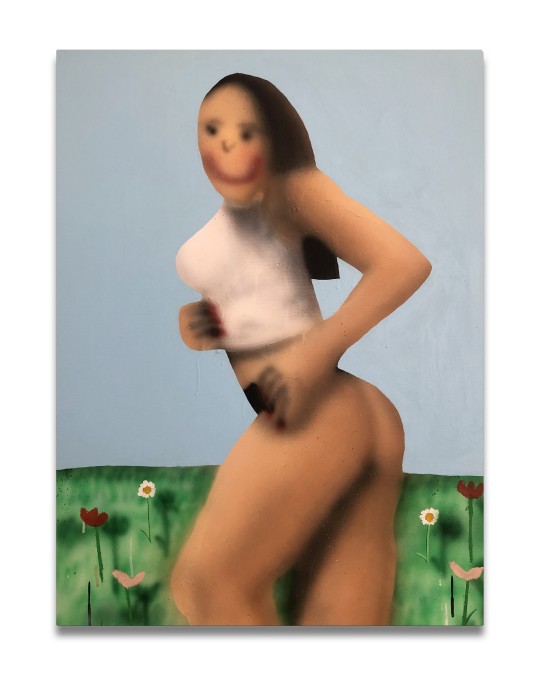
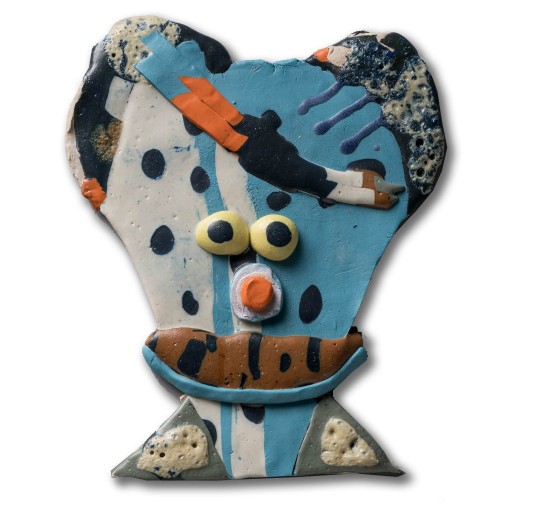
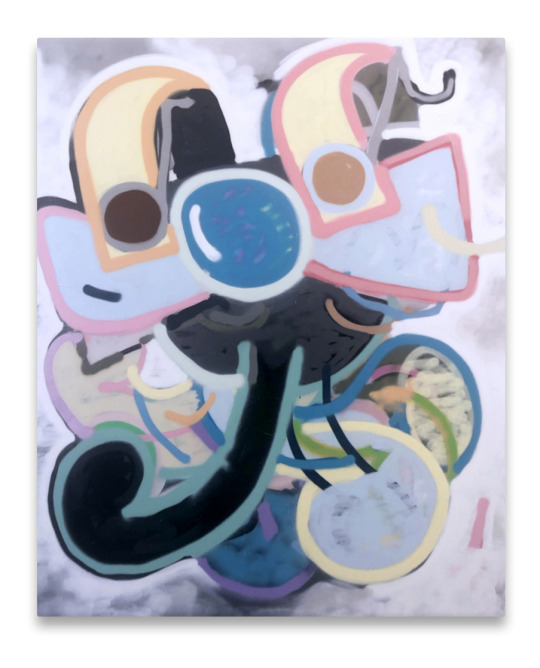
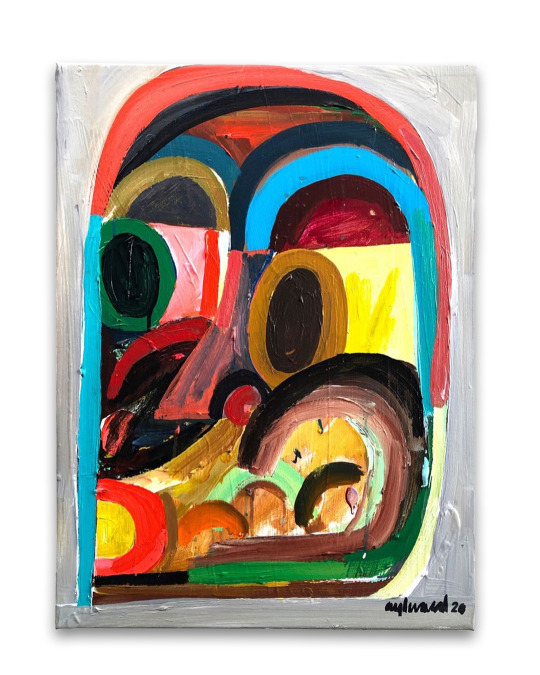
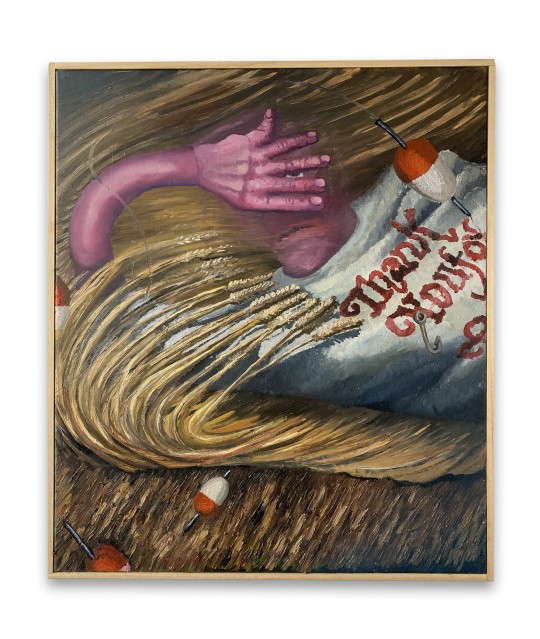
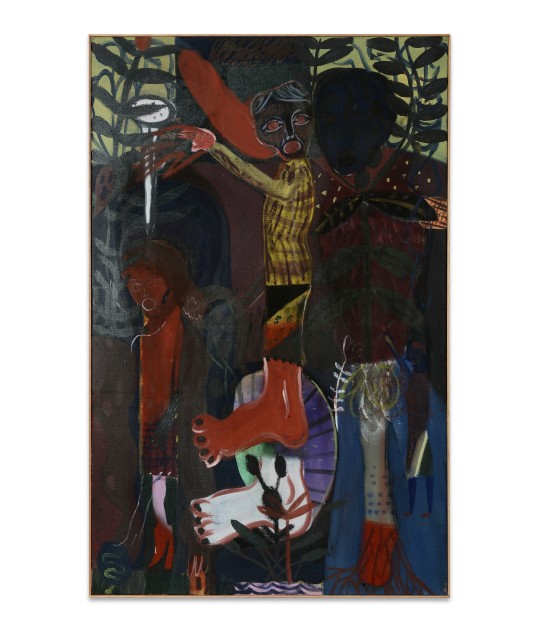


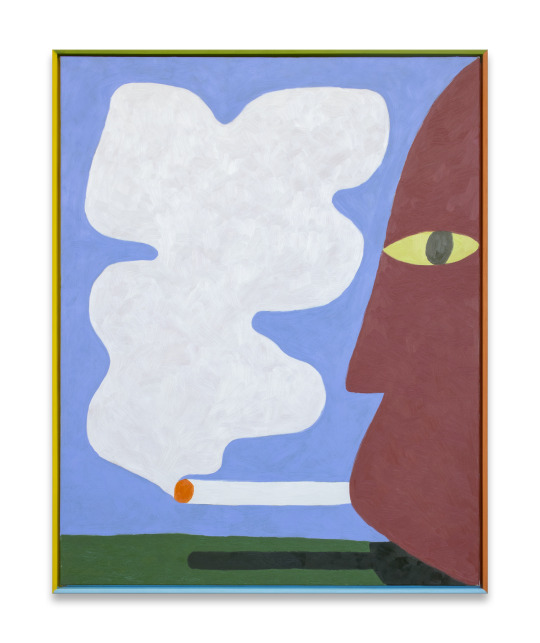

"DontGiveADamns” at Marian Cramer Projects.
When art making steps away from realistic representation and releases itself from the rules of tangible reality, it enters the infinite sphere of imagination and innovation. Works created with such approach are fueled by the urge to create and explore this obscure realm through experimentation of both the visual and technical aspects of the creative practice. Whether with abstraction, going back to "naive" or "bad" painting, simplifying imagery to barely recognizable forms, allowing the materials to lead the creative path, the artists working in such manner at some point stopped "giving a damn" and boldly entered the unknown territory.
Marian Cramer Projects in Amsterdam has teamed up with curator, writer, and contributing editor of Juxtapoz magazine, Sasha Bogojev, for an exciting group exhibition that will celebrate the beginning of Summer and hopeful restoration of everyday life's energy. “DontGiveADamns” is an eclectic selection of 18 international artists whose creative practice carries the "f**k it!" attitude at some level. Whether approaching the rendering of their visuals loosely, being purposely careless or sloppy about the technical aspect of their work, or resolutely trying to not fit in any existing genres, “DontGiveADamns” are embodying the textbook "creative free spirit" to the fullest.
“DontGiveADamns” will be presenting new original works by Rhys Lee, Joji Nakamura, Lung, Picardo Mario, Heidi Ukkon, Erkut Terlikaiz, David Noro, Jordy van den Nieuwendijk, Derek Aylward, Felix Treadwell, Charles Shedden aka Owvbics, Wayne Horse, Marti Sawe, Pelucas Pilas Bubbles, Nabeeha Mohamed, Hunter Potter, Antwan Horfee, Evgeen Čopi Gorišek, and Jordy Kerwick.
-
Be sure to follow Supersonic Art on Instagram!
100 notes
·
View notes
Text
The Queen and Aberfan
The tragedy at Aberfan was a dark moment in the history of the United Kingdom. On 21 Oct 1966, a coal waste tip collapsed and slid into a school in the mining village of Aberfan in Wales, claiming the lives of 144 people. A committee eventually determined the National Coal Board was responsible for what happened.

Queen Elizabeth II did not immediately visit the village, but she eventually decided to go eight days later, and ended up returning several times throughout her life.
“From the remaining children of Aberfan”, said one of the men as his surviving grandchild presented the Queen with a bouquet. This heart-breaking episode is all the more so for being true as 116 children and 28 adults were crushed and killed by an avalanche of water, mud and debris in the mining village of South Wales. The school had just all been singing the beautiful hymn ‘All Things Bright and Beautiful’.
But Queen Elizabeth II had taken some persuading to visit. In an early prelude to her response when Diana died, The Queen held back – that caution that has so often made her a great monarch.

According to Sally Bechdel Smith's biography Elizabeth the Queen, the monarch's caution wasn't a decision made out of coldness, but rather practicality. "People will be looking after me, she said according to Smith. "Perhaps they'll miss some poor child that might have been found under the wreckage."
And despite numerous suggestions that she should make the trip, the Queen stayed resolute in her opinion.
"We kept presenting the arguments," an advisor of the Queen's told her biographer Robert Lacey, "but nothing we said could persuade her."
Instead, the Queen first sent her husband Prince Philip. The singing of the mourners at the mass funeral was so beautiful, it was unbearable. Even the usually tactiturn Philip was visibly moved.

Her brother-in-law Lord Snowdon, traveled there on his own as well. "When I heard the news of the disaster on the wireless I felt I should be there because I was Welsh and thought the Welsh should stick together. So I just got on a train and went straight down," Indeed Lord Snowdon, bursting with Welshness, rushed to Wales on an overnight train - he even had a shovel packed. He went to the morgue and the hospital and grieved with survivors. He wrote to Princess Margaret, "Darling, it was the most terrible thing I have ever seen." His finest hour.
Six days after the tragedy, The Queen went to Aberfan and visited the relatives. One man had lost 13 grandchildren. A Councillor whom she called on, had lost 7 members of his family. Sally Beddell Smith states that The Queen said to one of the bereaved, ‘As a mother, I’m trying to understand what your feelings must be.’ She said with tears in her eyes. ‘I’m sorry I can give you nothing at present except sympathy.’

Her best biographer, Ben Pimlott, said that Aberfan was a throwback to her parents ‘looking the East End in the face’ during the Blitz. And her uncle David visiting Wales in 1936, weeks from Abdication, ‘Something must be done’.
Of course, she did it differently, diffidently; being in touch with her people did not come easily to Queen Elizabeth II. The tragedies of Lockerbie in 1988 and Dunblane in 1996 were to prove equally challenging. It is said that The Queen’s delayed response to Aberfan weighed heavily on her for decades. ‘Ma’am, where are you? Your people need You’.
Despite the monarch's remorse over her initial reaction to to the tragedy, for many survivors, her eventual presence was a comfort.
"If the Queen does regret not coming here straight away, I think that is misplaced," Jeff Edwards, who survived the disaster when he was eight years old, told the South Wales Echo in 2002. "When she did arrive she was visibly upset and the people of Aberfan appreciated her being here...She came when she could and nobody would condemn her for not coming earlier, especially as everything was such a mess."
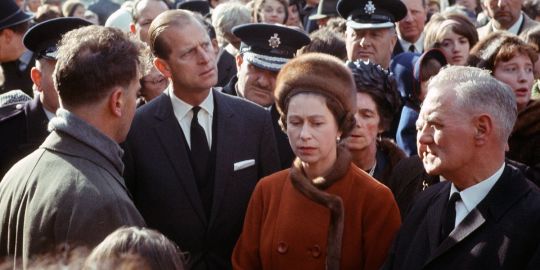
Marjorie Collins, an Aberfan woman who lost her son in the disaster, remembered the queen’s visit in a 2015 interview with ITV: “They were above the politics and the din and they proved to us that the world was with us, and that the world cared.” Another mother told ITV that no one judged the queen for her delayed response. “We were still in shock, I remember the Queen walking through the mud,” she said. “It felt like she was with us from the beginning.”
Generally speaking, the Queen is rarely emotional in public, instead maintaining a stereotypical British stiff upper lip. But in Aberfan, she let her guard down, even crying a little.
“The one thing I recall about the Aberfan disaster was the arrival of the Queen and how it made her cry,” Sir Mansel Aylward said in 2012.
Throughout her life, the Queen visited Aberfan another four times.

62 notes
·
View notes
Photo
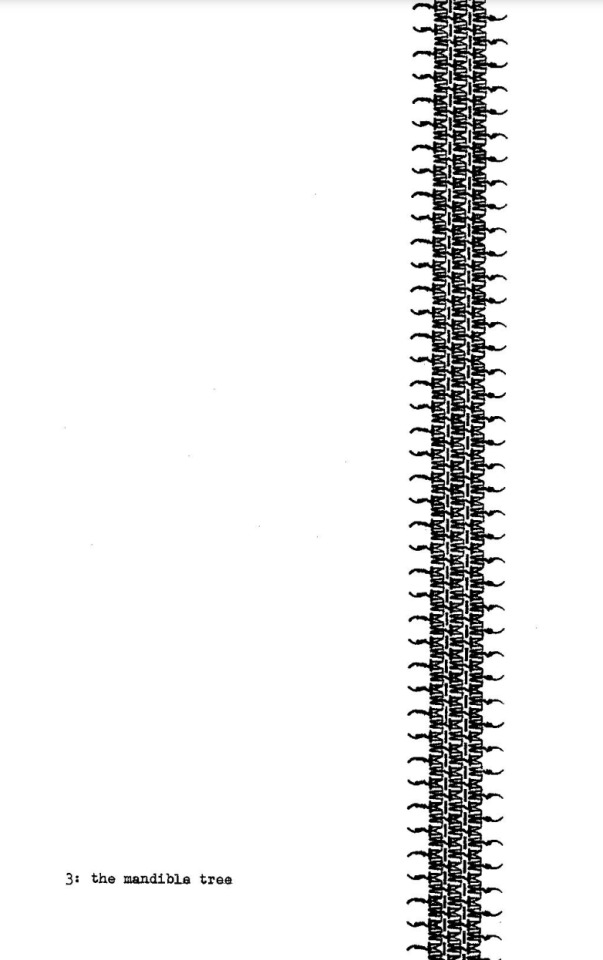





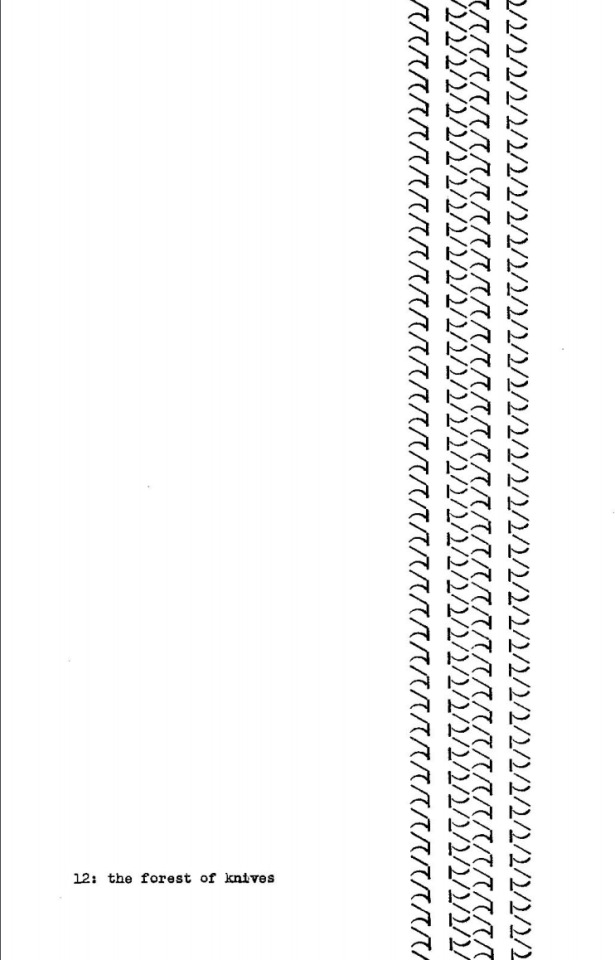
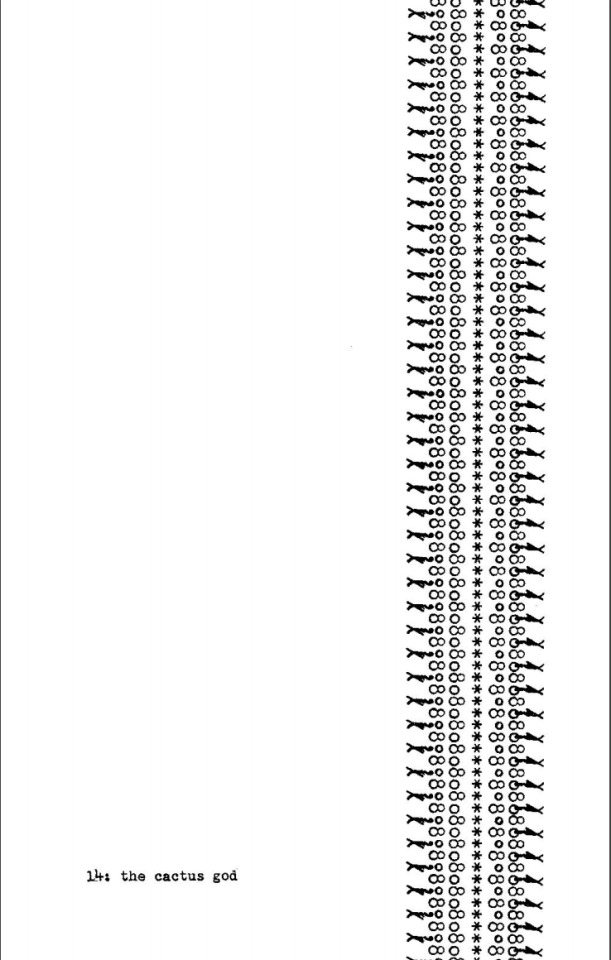
from David Aylward’s “Typescapes” 1967
https://ubutext.memoryoftheworld.org/vp/008_aylward_typescapes_1967.pdf
0 notes
Text
The New Sounds (3/21)

One year. We had one year, when most of the normal rules of everyday life were paused. What did we do?
Mostly get by? Sometimes, that’s good enough.
Early-Covid (like March-April 2020), I did a series of posts called Day Today. Remember them? Eh, it’s ok. I barely do. The concept was a song a day, and a little blurb about it. (There’s a playlist, fwiw.) The inspiration was a Instagram Live thing by Courtney Barnett and Lucius on 3/24/20. They messed around and played covers requested by the unruly commenting rabble. Their last song wasn’t a request; it was a planned closer. “Strangers” by the Kinks. “Strangers on this road we are on / We are not two, we are one.” (The whole stream is on YouTube – it’s great, and Kurt Vile shows up at some point. “Strangers” is at 3:57:45.)
At that moment, when we were just settling into this new normal, and making it to Summer 2020 (everything would surely return to the old normal by then, right?) relatively unscathed seemed like a big, but not impossible, societal ask, that song struck a cord. Still does. Turns out, and this is still weird to me, it was a big ask. Things got worse. Way worse. We got real scathed, and we’re not done. The collective hardship continues. The new normal is still the old new normal. And the new new normal isn’t here yet.
Appreciate this weird time. Tell your people in your bubble that you love them because you do even if they drive you crazy. Step outside of that bubble and feel the sadness, at least (actually, at most) because that’s just basic empathy for the enormous loss that we’ve experienced personally or at a distance. Feel happiness because there have been moments that were good. Look at pictures – the ones on your phone and the ones in albums, if you do that sort of thing. And remember. Where were you a year ago, and what did you feel? Where were you five, ten, fifteen, twenty years ago, and what did you feel? Different, right? Remember that and remember this. And tell the stories. Because that’s the only way this whole pandemic thing – this whole life thing, honestly – makes any bit of sense. What’d we do, what’d it mean. Lessons, pass em on.
I have a hunch that the most important ones boil down to love of some sort, but what do I know. I’m just your friendly neighborhood music blogger. With very little power (and an even littler audience), comes very little responsibility. So mostly, I just riff. OM and ECM don’t complain too much. JTB does, but she’s cool. These posts are like the editor’s note in print magazines. Nobody reads them, so just don’t offend and gfto the way for what the people really want. Check.
The New Sounds from March 2021: Nils Frahm, Bing & Ruth (Pixies cover), Lost Horizons, Wolf Alice, beabadoobee, Anna of the North, Lucy Dacus, Phoebe Bridgers (John Prine cover), Lana Del Rey, Helado Negro (David Bowie cover), TESSEL & Amber Arcades, Perfume Genius (Planningtorock ‘Jason there’s no rush’ Remix), Nana Yamato, St. Vincent, Japanese Breakfast, Jane Weaver, Crumb, Buzzy Lee, Built to Spill (The Delusions cover), Homeschool & Samia, The Obsessives (The Breeders cover), Max Jury & Fenne Lily, Alice Phoebe Lou, The Ladies, Aldous Harding (Deerhunter cover), U.S. Girls (The Birthday Party cover), Eve Adams, Hayley Williams, Bryde (Tori Amos cover), Ethel Cain, Taylor Swift (self-cover), Skullcrusher, Moontype, Ratboys, Another Michael, Buck Meek, The Underground Youth, Typhoon, Julien Baker, Danielle Durack, The Weather Station, Lightning Bug, Katy Kirby, Sun June, The Boys With the Perpetual Nervousness, Tangled Shoelaces, dad sports, Trunky Juno, Carl Renshaw, Adult Mom, Francis of Delirium, Bachelor, CMAT, Wallace, Coach Party, Pale Waves, EUT, girl in red, Payday, Claud, Dayglow, FRITZ, HUSHPUPPY, Guided by Voices, Maximo Park, Blanketman, Enumclaw, Lande Hekt, The Sonder Bombs, Mannequin Pussy, Camp Trash, Sydney Sprague, Winter, New Pagans, Jaws the Shark, Fake Fruit, Courting, Pardoner, Sprints, CIVIC, TV Priest, FACS, Iceage, NRCSSST, Dry Cleaning, Floatie, Mush, Big Scary, Madlib, Goat Girl, POSTDATA, Mogwai, Valley Maker, Gerry Glazerr, Lindsay Munroe, Maripool, PJ Harvey, Yung, The Besnard Lakes, Bernice, Ben Howard, San Holo, Erika de Casier, Jordana & Ryan Woods, MICHELLE & Arlo Parks, mimi bay, Pearl Charles, Jane Inc., Foxes, Zara Larsson, Lily Konigsberg, ella jane, Temptress, Islands, Dua Lipa, CRITTER, London Grammar, Yaya Bey, Drake, BROCKHAMPTON, Noname, Emi Wes, Sal Dulu & Fly Anakin, Smerz, Claptone, Brijean, Gilligan Moss, Doss, India Jordan, Vegyn, Overmono, Colleen, Gacha Bakradze, Pino Palladino, Elori Saxl, duendita, The Notwist, Anna B Savage, Madeline Kenney, Indigo Sparke, Bright Eyes, and Wild Pink. And more. It’s a long one.
Widget…
The header image is by my dear friend Roberta Aylward. She has produced some of the most vital work that I’ve seen during the pandemic. Please follow her @robertaaylward on Instagram.
And R.I.P., NS. There aren’t too many people in my circles who’ve known me almost every day of my life anymore. She was one of them, and one of the kindest. I loved her, and I will miss her.
The last track is another cover of “Strangers” by Lucius and Black Pumas. Full circle, mic drop. I’m half-vax’d. And I’m excited for part two next month. As the kids say, let’s go.
More soon.
JF
from WordPress https://ift.tt/3u9txtv
via IFTTT
1 note
·
View note
Video
vimeo
EDITH WALKS is a 60 minute 66 second feature film inspired by a walk from Waltham Abbey in Essex via Battle Abbey to St Leonards-on-Sea in East Sussex. The film documents a pilgrimage in memory of Edith Swan Neck.
Bits of King Harold's body were brought to Waltham for burial near the High Altar after the Battle of Hastings in 1066 and his hand fast wife Edith Swan Neck is seen cradling him in a remarkable sculpture at Grosvenor Gardens on the sea front in St Leonards. The film re-connects the lovers after 950 years of separation.
The 108 mile journey, as the crow flies, allows the audience to reflect upon all things Edith. A conversation in Northampton between Alan Moore, Iain Sinclair and Edith Swan Neck is also a key element to the unfolding ‘story’.
With images shot using digital super 8 iphones and sound recorded using a specially constructed music box with a boom microphone, the film unfolds chronologically but in a completely unpredictable way. The numerous encounters and impromptu performances en route are proof, as if needed, that the angels of happenstance were looking down on us, with EDITH as their hallucination.
With David Aylward, Claudia Barton, Anonymous Bosch, Jem Finer, Andrew Kötting, Alan Moore and Iain Sinclair
“Who you walk with alters what you see; the view, the prospect ..”
0 notes
Text
Royal Irish Regiment soldiers who died on 19th October
1914
2nd Bn
10766 Private Dempsey. Interred Rue-Petillon Military Cemetery, Fleurbaix, France.
10824 Private John O'Neill, New Ross, Co. Wexford. Interred Vieille-Chapelle New Military Cemetery, Lacouture, France.
6999 Bandsman David Kelly, Kirkbride, Cumberland. Commemorated on the Menin Gate Memorial, Belgium. An unusual commemoration this, as Kelly’s date of death seems to be uncertain. 19 October 1914 appears to be the last date on which he was known to be alive. Quite why he is commemorated on the Menin Gate rather than Le Touret Memorial is a mystery.
Interred Bailleul Road East Cemetery, St. Laurent-Blangy, France.
6645 Private Patrick Sweeney, Lismore, Co. Waterford.
10896 Private Edward Byrne, Clonmel, Co. Tipperary.
10888 Private Daniel Cronin, Cullen, Co. Cork.
8804 Private John Murphy, Birkenhead, Cheshire.
Interred Cabaret-Rouge British Cemetery, Souchez, France.
10941 Private William Roberts, Clonmel, Co. Tipperary.
6388 Private Robert Morrissey, Freshford, Co. Kilkenny.
5938 Private Doyle, Thomastown, Co. Kilkenny.
Interred Caudry Old Communal Cemetery, France.
7412 Private Edward Rielly, Thomastown, Co. Kilkenny.
8121 Private Thomas O'Neill, Kilmanagh, Co. Kilkenny.
Commemorated on Le Touret Memorial, France.
Captain Alexander Knox
Second Lieutenant Alan Anderson, Dublin.
Second Lieutenant Henry Moore, Delgany, Co. Wicklow.
Second Lieutenant Donald Smyth, Blackrock, Co. Dublin.
Second Lieutenant John Smyth, Ardmore, Derry.
2523 Sergeant William Barry, Kilkenny.
6570 Sergeant Charles Beatty, Gosport, Hampshire.
5493 Sergeant Andrew Brien, Kilmore, Co. Wexford.
9270 Sergeant Michael Forkin, Hull, Yorkshire.
9724 Sergeant Frederick Hill, Woodford Green, Essex.
6833 Sergeant William Turnbull, Newcastle On Tyne.
3990 Lance Sergeant William Grace , Kilkenny.
9301 Corporal Jeremiah Dowd , Wexford.
5981 Corporal Stephen Horrigan, Dungarvan, Co. Waterford.
10745 Corporal Edmund Ryan, Knocklong, Co. Limerick.
9870 Corporal Edward Ryan, London.
6952 Lance Corporal John Brien, Wexford.
9363 Lance Corporal Michael Denny, Fethard, Co. Tipperary.
10815 Lance Corporal James Duggan , Midleton, Co. Cork.
5917 Lance Corporal Patrick Fahey, Carrick On Suir, Co. Tipperary.
10518 Lance Corporal Robert Fernie , Tramore, Co. Waterford.
4463 Lance Corporal Charles Hale, Fermoy, Co. Cork.
6186 Private William Aylward, Knocktopher, Co. Kilkenny.
6017 Private Daniel Barrett, Clonmel, Co. Tipperary.
7253 Private Thomas Berry, Tullow, Co. Carlow.
6237 Private James Biggane, Mitchelstown, Co. Cork.
6615 Private David Brien, Waterford.
6599 Private John Brooks , Enniscorthy, Co. Wexford.
4574 Private John Burke, Urlingford, Co. Kilkenny.
6266 Private John Burke , Clonmel, Co. Tipperary.
6536 Private Cornelius Burke , Cork.
4391 Private Philip Butler, Newtownbarry, Co. Kilkenny.
5723 Private James Cahill, Waterford.
7667 Private Matthew Canavan, Ballon, Co. Carlow.
6690 Private Michael Carberry, Waterford.
4380 Private Patrick Cardiff, Taghmon, Co. Wexford.
6767 Private John Carey, Cashel, Co. Tipperary.
10641 Private Richard Carroll, Enniscorthy, Co. Wexford.
6123 Private Christopher Casey, Tipperary.
4376 Private Patrick Casey, Nenagh, Co. Tipperary.
6616 Private Charles Churchill, Dublin.
10831 Private John Clifford, Limerick.
8761 Private Joseph Climpson, Chesham, Buckinghamshire.
6347 Private Stephen Collins, age 16. From Waterford. One of six brothers who served, four of whom were killed.
4711 Private Thomas Condon , Doneraile, Co. Cork.
7755 Private William Connolly, Waterford.
6341 Private Michael Connors, Waterford.
5432 Private James Copeland, Enniscorthy, Co. Wexford.
4803 Private John Coughlan, Clonmel, Co. Tipperary.
5775 Private James Cullen, Nenagh, Co. Tipperary.
4347 Private James Dempsey, Ballycogley, Wexford.
6622 Private William Dillon, Waterford.
5928 Private Thomas Donovan, Golden, Co. Tipperary
3965 Private Patrick Doyle , Ferns, Co. Wexford.
7471 Private John Dunne, Tyrone.
10864 Private Denis Dwyer, Enniscorthy, Co. Wexford.
4555 Private Richard Fahey, Carrick-on-Suir, Co. Tipperary.
6712 Private Peter Farrell, Ferns, Co. Wexford.
5917 Private John Fitzgerald, Limerick.
8535 Private Patrick Fitzpatrick, Ballacolla, Co. Laois
6543 Private James Fleming, Dublin.
6524 Private James Flynn, Waterford.
6870 Private Thomas Flynn, Galway.
6130 Private Patrick Flynn, Dungarvan, Co. Waterford.
7067 Private Harry Foat , Liverpool.
5612 Private Frederick Forsey, Waterford.
6775 Private Thomas Furlong , Waterford.
7455 Private William Gagan, London.
4072 Private James Green, Waterford.
4853 Private James Griffin, Clonmel, Co. Tipperary.
6212 Private Michael Griffin, Tramore, Co. Waterford.
6682 Private Michael Halley, Clonmel, Co. Tipperary.
5079 Private William Halloran, Galbally, Co. Tipperary.
8237 Private Thomas Halpin, Liverpool.
6637 Private James Hayden, Ferns, Co. Wexford.
8054 Private David Higgins, Cork.
4158 Private Patrick Higgins, Kilkenny.
7395 Private Thomas Holton, Dublin.
10643 Private John Humphreys, Gorey, Co. Wexford.
10750 Private William Hunt, Waterford.
3489 Private Thomas Kavanagh, Kilkenny. His brothers Edward and James also died in the war.
10711 Private Michael Kelly, Dublin.
5870 Private Mark Kelly, Tagoat, Co. Wexford.
5177 Private Michael Kelly, Carrick-on-Suir, Co. Tipperary.
5532 Private Patrick Kelly, Athlone, Co. Westmeath. Served in the Tirah Campaign, 1897-8.
3880 Private Edward Kennedy, Gorey, Co. Wexford.
4120 Private William Keogh, Callan, Co. Kilkenny.
8186 Private James Kiely, Waterford.
6073 Private James Kinsella , Waterford.
6533 Private John Lacey, Enniscorthy, Co. Wexford.
6396 Private Thomas Lawless, Tramore, Co. Waterford.
4551 Private John Lawlor, Killinick, Co. Wexford.
9079 Private William Love, Canterbury.
5940 Private Michael Lukeman, Cashel, Co. Tipperary.
10692 Private Patrick Maddock, Portlaw, Co. Waterford.
7643 Private Martin Maher, Two Mile Borris, Co. Tipperary.
10589 Private Patrick Mahoney, Youghal, Co. Cork.
5993 Private Michael Malone, Waterford.
6286 Private John Manning, Charleville, Co. Cork.
10599 Private John Martin, Dublin.
4226 Private Peter McCarthy, Carrick-on-Suir, Co. Tipperary.
5925 Private John McGrath, Waterford.
4381 Private William Mernagh, New Ross, Co. Wexford
4174 Private Patrick Minihan, Carrick-on-Suir, Co. Tipperary.
7555 Private Matthew Moore, Enniscorthy, Co. Wexford
6486 Private James Moran, Kilkenny.
5873 Private Michael Moran, Waterford.
4706 Private William Morrissey, Carrick-on-Suir, Co. Tipperary.
8191 Private Martin Morrissey, Dungarvan, Co. Waterford.
5089 Private Cornelius Moynihan, Clonmel, Co. Tipperary.
8156 Private James Murphy, Bagenalstown, Co. Carlow.
4068 Private Matthew Murphy, Wexford.
4316 Private Patrick Murphy, New Ross, Co. Wexford.
5406 Private Richard Nolan
4438 Private John O'Brien, Clonmel, Co. Tipperary.
8490 Private John O'Brien, Limerick.
9316 Private Thomas O'Brien
4931 Private William O'Grady
8059 Private Timothy O'Leary, Cork.
8410 Private Patrick Phelan, Kilmacthomas, Co. Waterford.
6463 Private William Power
6061 Private Edward Power
6573 Private Maurice Power
6291 Private Michael Power
2796 Private Andrew Reeves, Mallow, Co. Cork.
6493 Private John Rochford
5972 Private John Ryan, Thurles, Co. Tipperary
6674 Private John Shaw
6259 Private Stephen Sinnott
8299 Private John Slavin
6679 Private Thomas Spillard
4906 Private John Stephens
5971 Private James Swift, Waterford.
6579 Private William Toole, Enniscorthy, Co. Wexford.
267 Private William Treacy, Naas, Co. Kildare
6156 Private Edward Wall
4693 Private Joseph Walsh
5427 Private Patrick Walsh
3093 Private Patrick Walshe, Kilkenny.
7389 Private Michael Whelan, New Ross, Co. Wexford.
8917 Private Michael Whelan
0 notes
Text
À quand des traitements et vaccins contre le coronavirus ?
Les laboratoires se mobilisent pour fournir au plus vite des médicaments et vaccins afin d’enrayer l’épidémie de coronavirus. Plusieurs pistes sont prometteuses, mais il faudra attendre au moins plusieurs semaines avant que les premiers traitements ne soient commercialisés.

À l’heure où nous écrivons ces lignes, aucun traitement ni aucun vaccin n’a encore été mis au point contre le virus Covid-19, qui a déjà fait plus de 7 000 morts dans le monde. Mais la recherche s’organise. We Demain fait le point.
Du côté des traitements
Rappelons d'abord que la maladie étant due à un virus, le coronavirus Sars-CoV2, et non une bactérie, les antibiotiques s'avèrent inefficaces (sauf pour prévenir une surinfection).
Dans son point presse du lundi 16 mars, l’Organisation mondiale de la santé (OMS) dénombre plus de 300 essais cliniques en cours (dont plus de 80 en Chine) afin de développer des traitements.
La piste la plus sérieuse semble être un antiviral mis au point par le laboratoire américain Gilead. “Il n’y a pour l’instant qu’un seul médicament dont nous pensons qu’il pourrait avoir une réelle efficacité. Et c’est le remdesivir”, a confirmé Bruce Aylward, un responsable de l’OMS, lors d’une conférence de presse. Initialement développé pour combattre le virus ebola, mais non commercialisé à ce jour, ce médicament a déjà été testé avec succès sur des patients américains par le centre médical de l’université du Nebraska, ainsi que des patients chinois.
L’Inserm a annoncé dans un communiqué de prochains essais cliniques au niveau européen pour le remdesivir, ainsi que pour deux autres thérapies, le lopinavir et une combinaison lopinavir+interféron, sur 3 200 personnes, dont 800 Français.
Les laboratoires Sanofi et Regeneron ont également annoncé ce lundi 16 mars le début d’essais cliniques sur 400 personnes afin d’évaluer l’efficacité du Kevzara, un immunosuppresseur (qui inhibent l’activité du système immunitaire) déjà utilisé pour traiter la polyarthrite rhumatoïde, et qui pourrait aider les patients atteints d’un syndrome de détresse respiratoire aigüe.
L’hydroxychloroquine, un antipaludéen qui exerce une activité anti-inflammatoire et antivirale, est aussi étudié par les chercheurs comme potentiel traitement contre le coronavirus, bien que son efficacité ne fasse pas consensus.
L’infectiologue Didier Raoult, directeur de l'IHU de Marseille, affirme avoir obtenu des résultats concluants suite à un test clinique sur 24 patients (validé par le ministère de la santé) : au bout de six jours, 75 % de ceux qui avaient pris la molécule n’étaient plus porteurs du virus, contre seulement 10 % des personnes qui n’avaient pas bénéficié du traitement. Le ministère de la Santé a annoncé vouloir étendre l’essai clinique dans un autre hôpital, et sur un plus grand nombre de patients. Les personnes hospitalisées à l’hôpital de la Pitié-Salpêtrière à Paris peuvent, depuis vendredi et sur leur accord, se voir administrer de l'hydroxychloroquine.
Le plasma des anciens malades infectés peut aussi aider les patients, notamment ceux dans un état grave, à lutter contre le Covid-19. Les autorités sanitaires chinoises appellent depuis mi-février les individus guéris à donner leur sang, en les testant au préalable afin de s’assurer qu’ils ne peuvent transmettre le virus.
Du côté des vaccins
Solution de long terme contre la maladie, la création d’un vaccin nécessite un délai de plusieurs mois entre sa conception et sa mise sur le marché. Les travaux en cours en sont pour le moment au stade préclinique.
Aux États-Unis, le premier essai clinique pour tester un vaccin a débuté lundi. Le mRNA-1273 a été développé par des scientifiques des Instituts nationaux de santé américains (NIH) et de l’entreprise de biotechnologies américaine Moderna. Les essais seront menés sur 45 adultes volontaires pendant environ six semaines, ont indiqué les NIH dans un communiqué. Si tout se passe bien, il pourrait être disponible d’ici 12 à 18 mois.
L’Europe est aussi dans la course pour mettre au point un vaccin, la société allemande CureVac ayant annoncé être en mesure de commencer ses premiers tests d’ici les prochains mois. La présidente de la Commission Européenne, Ursula von der Leyen, a confirmé ce mardi le versement d’un soutien financier à hauteur de 80 millions d’euros afin d’accélérer le processus, évoquant une possible commercialisation “avant l’automne”.
.@EU_Commission travaille sans relâche pour faire face à la crise du #coronavirus, en:
▪️Rapatriant nos concitoyens bloqués hors 🇪🇺
▪️Soutenant l’emploi
▪️Finançant le développement des vaccins
▪️Coopérant avec industrie et gouvernements pour plus d’équipements de protection. pic.twitter.com/DsPJpMjp8g
— Ursula von der Leyen (@vonderleyen) March 17, 2020
En France, les chercheurs de l’Institut Pasteur ont également commencé à élaborer un dérivé de vaccin en s’inspirant d’un vaccin existant, celui contre la rougeole. Les équipes françaises ont identifié "le morceau d'ADN à même de déclencher une réponse immunitaire", explique le virologue Frédéric Tanguy dans L’Express, et pourraient commencer à tester un vaccin cet été.
La branche vaccin du laboratoire français Sanofi collabore également depuis février avec l’autorité américaine de recherche et développement biomédical avancé (BARDA) pour mettre au point un vaccin-candidat préclinique avancé contre le SRAS qui pourrait également protéger contre le Covid-19. Selon David Loew, vice-président exécutif de Sanofi Pasteur, les premiers essais cliniques pourraient débuter “dans environ un an à un an et demi”.
from We Demain, une revue pour changer d'époque https://ift.tt/3a1kv8n
via IFTTT
0 notes
Text
Covid-19: Why won’t the WHO officially declare a coronavirus pandemic?
By Debora MacKenzie

Passengers arriving from Italy at Debrecen International Airport, Hungary are being screened for signs of covid-19
Akos Stiller/Bloomberg via Getty Images
Prepare for a pandemic, says the World Health Organization, as the global spread of covid-19 soars by the hour. It’s not a matter of if, but when, say US health officials.
Yet so far the WHO refuses to actually call covid-19 a pandemic. Why?
The answer may lie with what kicks into gear when we deploy the P-word. Countries have pandemic plans that are launched when one is declared, but these plans may not be appropriate for combating covid-19 – and the WHO doesn’t want countries to lurch in the wrong direction.
Advertisement
The US Centers for Disease Control and Prevention says the covid-19 virus already meets two of its three criteria for a pandemic: it spreads between people, and it kills.
The third is that it has to spread worldwide. The virus is now in 38 countries – and counting – on nearly all continents, and those are just the ones we know about. How much more worldwide does it need to be?
Epidemic experts say there are no global criteria. There used to be for flu pandemics, but the WHO abandoned them when it was criticised after declaring a flu pandemic in 2009 that triggered expensive countermeasures in some countries, which some deemed unnecessary.
That bruising could be one reason the WHO seems anxious to avoid the P-word now. But there is a more important one.
There are two kinds of response to a growing pandemic. The first is containment: as cases appear, you can isolate each person then trace and quarantine their contacts. That worked for SARS and the 2014-2016 Ebola outbreak.
The second is mitigation. If containment only slows the virus, eventually you get “community spread”: people are infected without knowing how they were exposed, so you can’t quarantine all contacts. All you can do is slow the epidemic so it won’t peak massively and quickly, overloading health facilities. You close schools, cancel mass gatherings – or as China did, and Italy is now doing, shut down whole cities when they have community spread.
Flu skips between people so quickly that containment is a non-starter. Pandemic plans are mostly designed for flu, including those of the UK and the US, and they go straight to mitigation. The UK plan suggests containment only if a new pandemic flu hasn’t learned yet to spread as fast as normal flu.
In this light, statements from WHO start to make sense. “It’s not either/or,” said WHO director Tedros Adhanom Ghebreyesus this week. “We must focus on containment while doing everything we can to prepare for a potential pandemic.” David Heymann, who led the WHO’s fight against SARS, says “you need both containment and mitigation”.
Bruce Aylward of the WHO, just back from heading an international mission to China, reports that it used full-on mitigation – stopping travel, keeping people inside, shutting down the huge city of Wuhan – in Hubei province, which had community spread before control efforts even began. As a result the epidemic stopped climbing and new cases are falling steeply, says Aylward.
Everywhere else, China stopped community spread from developing by contact tracing and quarantine – and reminding everyone to wash their hands and monitor their temperature. Some places also used mitigation measures such as cancelling public gatherings, school and work as well. The key, says Aylward, was tailoring the approach to local circumstances.
That seems to be the WHO’s concern: call this a pandemic, and countries will apply blanket measures designed for flu. “People think it’s like SARS so you do things that way, or it’s a pandemic so you run and mitigate,” Aylward said during a press conference in Beijing. “If we only approach it with a binary SARS-influenza mentality, we are not going to have the agility of approach that we’ve seen in China that is going to be fundamental to beating this on a global scale.”
Yet thinking seems to be binary. Nancy Messonnier, head of the CDC’s centre for respiratory diseases, says the US will use containment until it gets signs of community spread – then the strategy will change.
Meanwhile the WHO seems to have a third problem with the P-word. “Using the word pandemic now does not fit the facts but it may certainly cause fear,” said Tedros. Asked about the WHO’s reluctance to call a pandemic, WHO spokesperson Tarik Jasarevic said “it is important to focus on actions and not on words.”
True – but words matter. Reluctance to tell the public the truth for fear of causing panic has plagued responses to other disease emergencies, notably BSE in Britain. Risk communication experts warn that not telling the public that containment will not prevent a pandemic – but might still slow it – risks greater shock over what comes next.
Sign up to our free Health Check newsletter for a weekly round-up of all the health and fitness news you need to know about
More on these topics:
coronavirus
Read More
The post Covid-19: Why won’t the WHO officially declare a coronavirus pandemic? appeared first on Gadgets To Make Life Easier.
from WordPress https://ift.tt/2vJaxcS
via IFTTT
0 notes
Text
As Fears of a Pandemic Mount, W.H.O. Says World Is Not Ready

BEIJING — As new cases of the coronavirus spiked on two continents, the World Health Organization warned on Monday that the world was not ready for a major outbreak, even as it praised China’s aggressive efforts to wrest the epidemic under control. After two weeks on the ground in China, a team sent by the W.H.O. concluded that the draconian measures China imposed a month ago may have saved hundreds of thousands of people from infection. Such measures — sealing off cities, shutting down businesses and schools, ordering people to remain indoors — have provoked anger in China and could be difficult to replicate in democratic countries with a greater emphasis on protecting civil liberties. “There’s no question that China’s bold approach to the rapid spread of this new respiratory pathogen has changed the course of what was a rapidly escalating and continues to be a deadly epidemic,” said Bruce Aylward, a Canadian doctor and epidemiologist who has overseen international campaigns to fight Ebola and polio and who led the W.H.O. delegation. The epidemic has already killed more than 2,500 people in China, mostly in Hubei Province, where the outbreak began in December, and infected more than 77,000 people. But the number of new infections in China has been steadily dropping, giving officials in the country confidence that the extraordinary measures have been effective in blunting the virus’s spread. There are concerns, however, that as people begin returning to work in China, the virus could flare up again. At the same time, new cases are escalating outside China. In Italy, where there has been an eruption of more than 150 cases, the authorities have locked down at least 10 towns, closed schools in major cities and canceled sporting events — all moves that are echoes of China’s tactics, if not quite as draconian. In Iran, the outbreak has killed at least 12 people as of Monday, the largest number of coronavirus-linked deaths outside China. South Korea on Monday reported 231 additional cases, bringing the nation’s total to 833 cases and seven deaths. Dr. Aylward said responding swiftly and aggressively to contain outbreaks and treat those infected was paramount. “We have all got to look at our systems because none of them work fast enough,” Dr. Aylward said. The virus that has crippled China for more than a month now threatens to become a pandemic that could touch virtually every part of the globe. Stock markets in Asia, Europe and North America plunged on Monday as investors worried that the economic disruption the outbreak has already caused in China is all but certain to have wider impact. The S & P 500 dropped nearly 3 percent in early trading on Monday, after European markets recorded their worst day since 2016, and major benchmarks in Asia closed sharply lower. The Dow Jones industrial average fell more than 900 points in the first hours of trading.
Updated Feb. 10, 2020
What is a Coronavirus?
It is a novel virus named for the crown-like spikes that protrude from its surface. The coronavirus can infect both animals and people, and can cause a range of respiratory illnesses from the common cold to more dangerous conditions like Severe Acute Respiratory Syndrome, or SARS.
How contagious is the virus?
According to preliminary research, it seems moderately infectious, similar to SARS, and is possibly transmitted through the air. Scientists have estimated that each infected person could spread it to somewhere between 1.5 and 3.5 people without effective containment measures.
How worried should I be?
While the virus is a serious public health concern, the risk to most people outside China remains very low, and seasonal flu is a more immediate threat.
Who is working to contain the virus?
World Health Organization officials have praised China’s aggressive response to the virus by closing transportation, schools and markets. This week, a team of experts from the W.H.O. arrived in Beijing to offer assistance.
What if I’m traveling?
The United States and Australia are temporarily denying entry to noncitizens who recently traveled to China and several airlines have canceled flights.
How do I keep myself and others safe?
Washing your hands frequently is the most important thing you can do, along with staying at home when you’re sick.
China, which was the source of the outbreak, might also offer solutions, according to Chinese officials and the W.H.O.’s assessment, despite the confusion and obfuscation that slowed the government’s initial efforts to respond to what was then a mysterious new illness appearing in hospitals in Wuhan, the epicenter, in December. Since late January, the Chinese government has put at least 760 million people — more than half of its population — under residential lockdowns of varying strictness, from checkpoints at building entrances to hard limits on going outdoors, according to a New York Times analysis of government announcements in provinces and major cities. While China’s reporting has been at times confused — with changes to its method of counting causing huge swings in daily tolls — the overall trend since the middle of this month has indicated a slowing in the rate of infections. On Sunday, 24 Chinese provinces reported no new cases. Six of them lowered their emergency response measures. In Hubei Province there were 398 new cases, the second consecutive day in which the number of new cases declined. “The decline we are seeing is real,” Dr. Aylward said. Even so, the death toll continues to rise, with 150 deaths reported on Sunday, the highest in nearly three weeks. In total, 2,592 people in China have been killed by the virus. Liang Wannian, a senior official with China’s National Health Commission, said China was not ready to declare victory yet. “The situation is still very grim,” he said at a news conference. “We haven’t stopped the epidemic in Wuhan yet.” Many health experts agree it is premature to celebrate given the highly contagious nature of the virus and the potential for a new surge in cases when millions of people go back to work in China or when travel restrictions are lifted. But they generally agreed with the W.H.O.’s assessment on China’s measures. “The containment definitely worked in China,” said Leo Poon, the head of the public health laboratory sciences division at the University of Hong Kong. “The question now is whether similar policies can be applied in other countries.” Clarence Tam, an assistant professor of infectious diseases at the School of Public Health at the National University of Singapore, said it was difficult to interpret the case numbers from China, particularly from Hubei. That is because the total number of infections jumped when the authorities expanded the methods used to diagnose them twice in two weeks. “Trying to look at the case numbers is very difficult,” Dr. Tam said. “We don’t really know what is influencing those case numbers.’' Adding to the confusion, Chinese media outlets reported on Monday that Wuhan would begin easing a sweeping lockdown, by allowing some people to leave. But just hours after news of the change emerged, the authorities backtracked, saying the announcement had been made in error. What is unclear to many public health experts is whether a shortage of testing kits is causing a large number of cases to remain undetected. Hospitals in China remain overstretched and many patients say they have been turned away. Health care workers are still coming down with the virus despite official pledges to protect them. Mr. Liang, the health official, said more than 3,000 health care workers have been infected. Another problem is that China does not disclose how many people are being tested. If the proportion of people being tested is really declining, it would suggest there is a downturn in the rate of transmission. “But we don’t have that yet,” Dr. Tam said. “From my perspective, it’s ‘watch and wait and see,’ ” he said. “It looks positive but it’s difficult to interpret what those numbers mean at the moment.” In a speech on Sunday, China’s leader, Xi Jinping, called the epidemic the country’s most serious public health crisis and said it was “the most difficult to prevent and control” since the founding of the People’s Republic. The epidemic has already severely disrupted life and commerce — as well as the Communist Party’s annual legislative conferences that had been scheduled to begin in Beijing in early March. The Standing Committee of the National People’s Congress announced on Monday that it had postponed the conferences indefinitely. Mr. Xi said controlling the outbreak in Wuhan and Hubei as well as preventing the epidemic from spreading to Beijing, the capital, were the country’s top two strategic goals. He pledged more pro-growth policies to help overcome the epidemic. David Heymann, an epidemiologist at the London School of Hygiene and Tropical Medicine, said the case numbers from China suggest that there “may be a decrease in transmission.” China was following its playbook from the severe acute respiratory syndrome outbreak of 2002-2003, said Dr. Heymann, a former chief of communicable diseases at the W.H.O., when it was “able to stop outbreaks outside the epicenter in Guangdong Province by meticulous outbreak containment and control.” The real test could be yet to come. As China moves to restart its economy, the coronavirus could flare up again. “There is an acute recognition here that just as we — the Chinese — forced the tail of this outbreak down, it could come back up again as people start to move again, the shops start to open, the restaurants open, the schools open,” Dr. Aylward said. “It’s a risk.” Steven Lee Myers reported from Beijing and Sui-Lee Wee from Singapore. Amber Wang and Claire Fu contributed research in Beijing.
Read the full article
0 notes